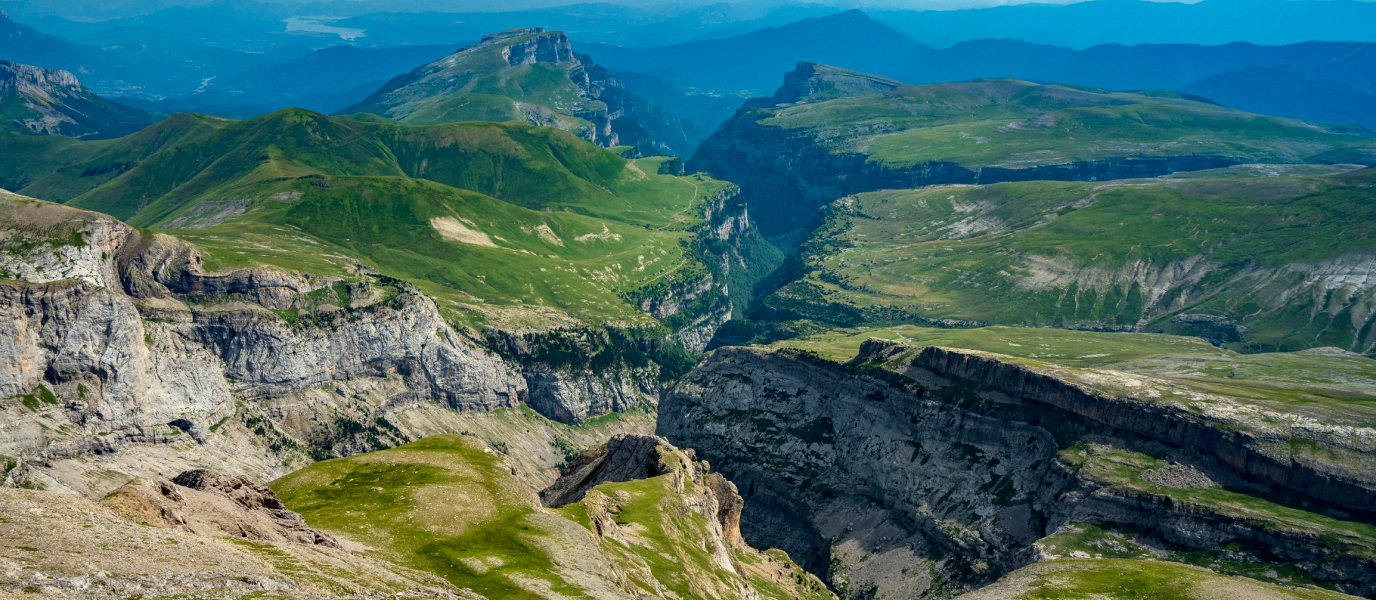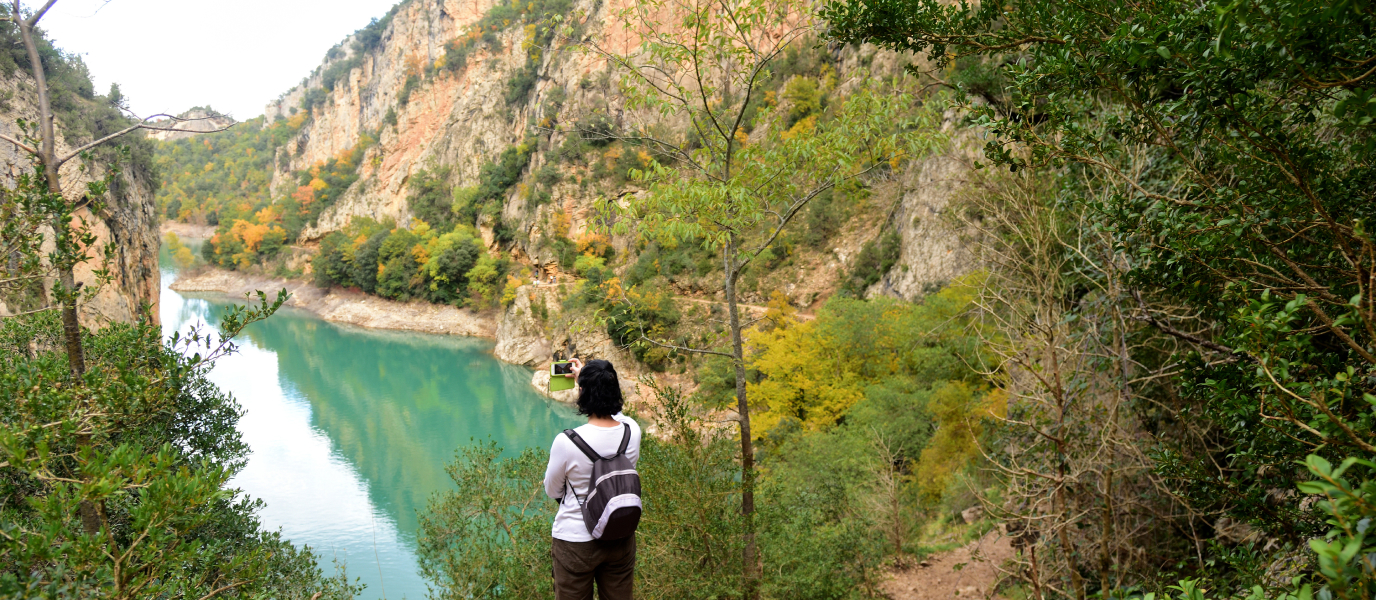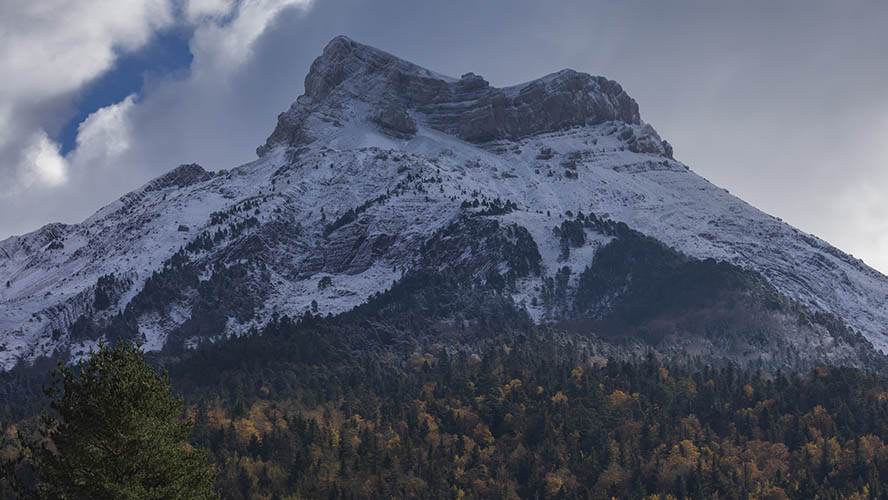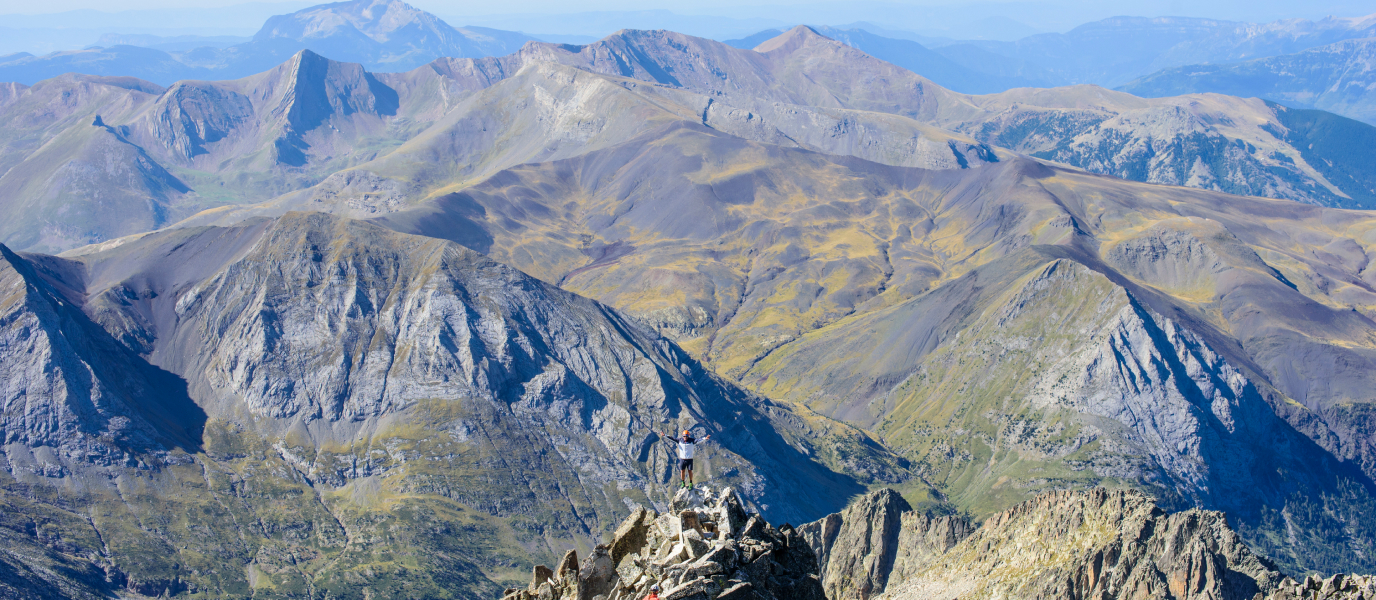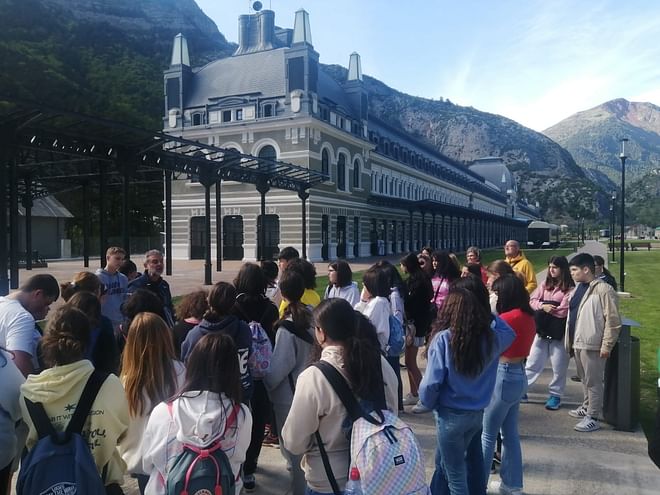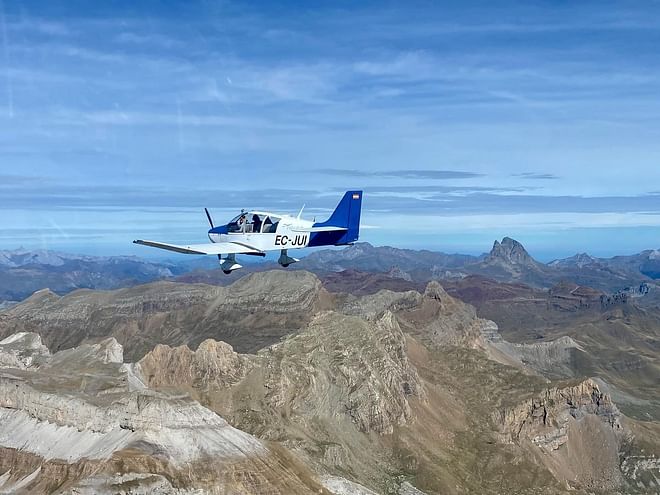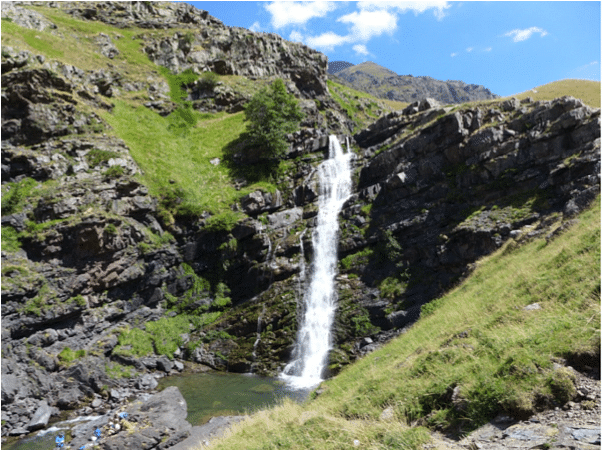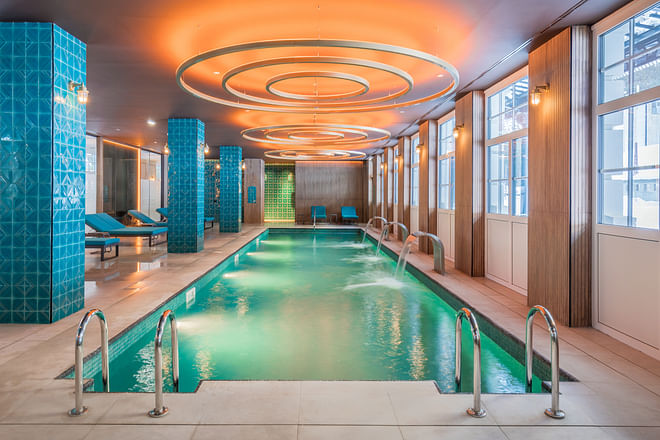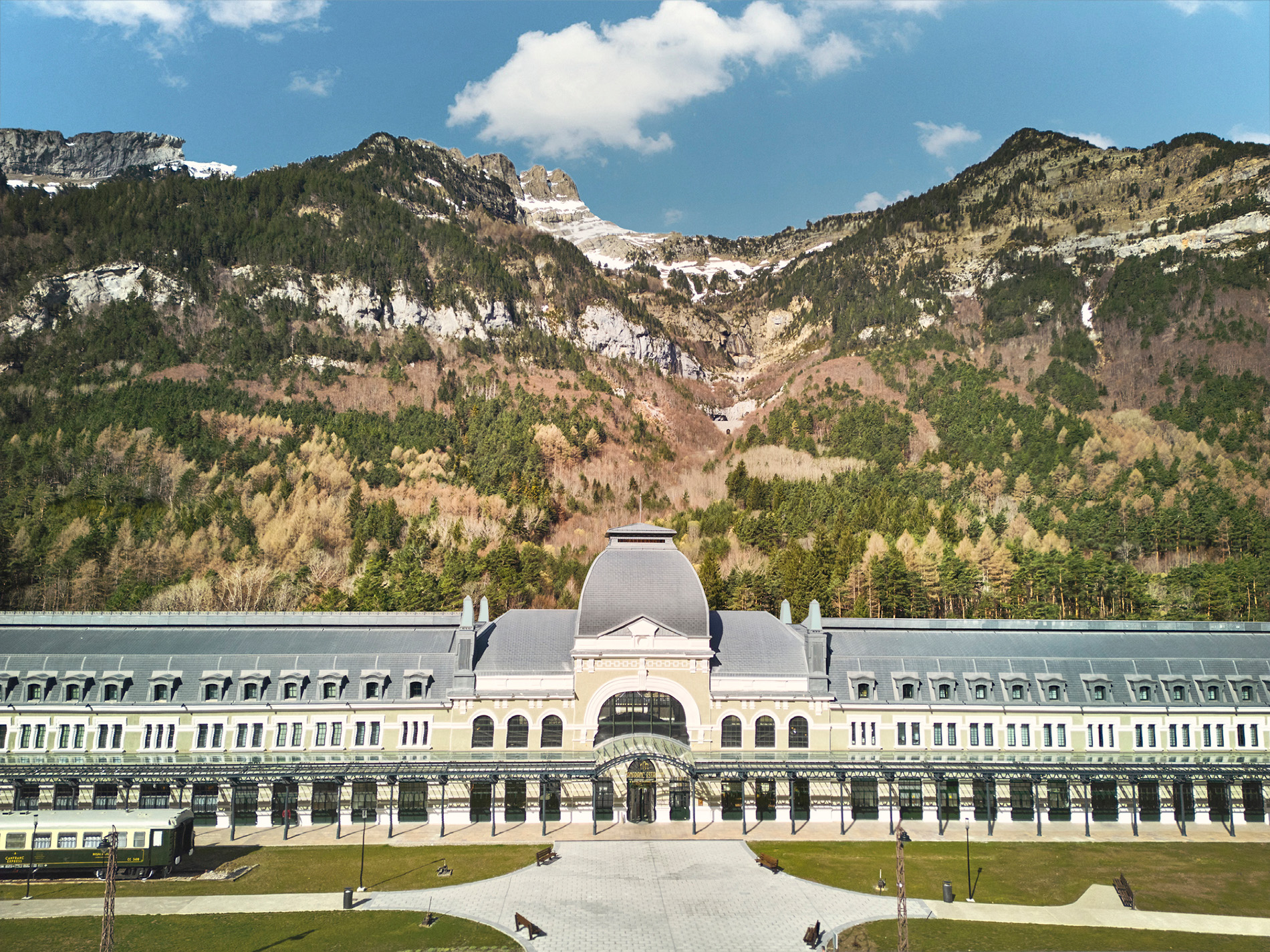Located next to the village of Escalona in Huesca, the Añisclo Canyon is one of the most beautiful landmarks of the Aragonese Pyrenees. With beautiful waterfalls, a verdant forest and spectacular natural surroundings, this stunning canyon is found in the Ordesa y Monte Perdido National Park in Huesca. This deep gorge was initially defined via a process of glacial erosion, before being further shaped by the fluvial erosion of the Bellós river.
Running from north to south, the Añisclo Canyon is located close to several other must-visit local landmarks including the Molino de Aso Cave (also known as the Moro Cave); the Buerba viewpoint and the charming villages of Puyarruego, Vió, Nerín and Fanlo.
If you’re passionate about hiking, head to the Escalona Information Point and ask for information about the different hiking routes around the Añisclo Canyon, which are suitable for hikers of all ages and abilities. Alternatively, you could call them directly at (+34) 974 505 131. These routes are also perfect for families who are spending some time away with young children.
Significance and characteristics of the Añisclo Canyon
The Añisclo Canyon extends for more than 10 kilometres from the Añisclo glacial cirque, at the foot of Monte Perdido, to the confluence of the Aso river valley. Several chutes and waterfalls can be found at different points along its course. One of the most impressive ones is the Fuen Blanca (or Fon Blanca) waterfall at the Añisclo Peak, which plunges vertically over the valley. This is a particularly popular destination for lovers of chutes and waterfalls. Close to the waterfall, in the parts where plants and vegetation can grow, there are multiple abundant forests. One such example is the Selva Plana, which boasts an impressive range of exuberant flora.
When the Bellós Canyon reaches the San Úrbez hermitage, it narrows and changes direction until it reaches the village of Escalona. Be sure to find the time to visit this fascinating 8th century hermitage with a cave-like structure, which looks like a small, man-made shelter built into the side of the mountain.
The Añisclo Canyon is notable for its diverse and unique flora. The Los Baños spring marks its point of lowest altitude, standing at 700 metres above sea level, while the the Punta de las Olas, with an altitude of 3,022 metres, is its highest point. It is a real must-visit location for lovers of unspoiled natural landscapes.
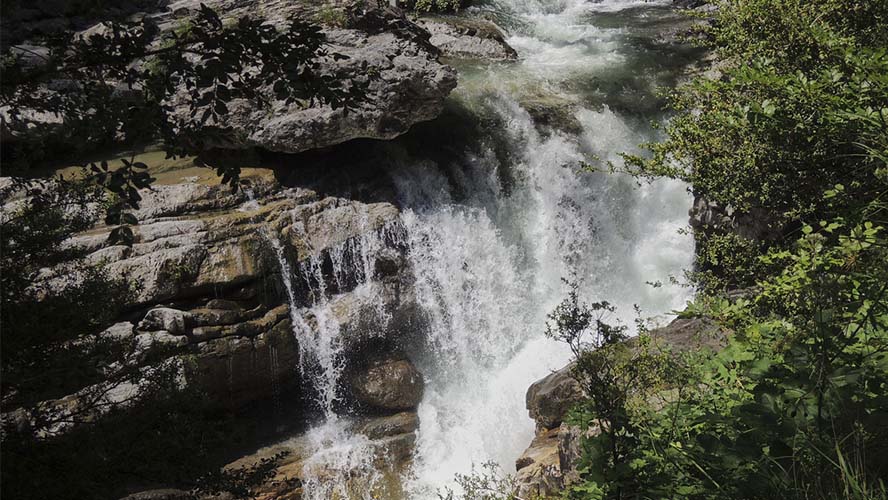
Routes through the Añisclo Canyon
The Añisclo Canyon route does not pose any significant difficulties, making it an ideal hiking route for the whole family. We recommend starting from the Añisclo Canyon car park in Escalona.
The car park enjoys easy access to a circular hiking route, which takes around two hours to complete and is suitable for hikers of all abilities. Cross the Roman bridge until you reach the San Úrbez hermitage —a pilgrimage site where people would once come to pray for rain— and continue along the path that descends to the Aso river.
Hikers will pass through a diverse landscape in which they can admire ancient stone walls, crystal clear pools of water and beautiful plains, where they will learn how the force of water can erode even the hardest of rocks.
If you wish to visit the Aso Mill, turn off when you see a signpost approximately 15 minutes after starting the hike from the car park. After a short 5-minute detour, you’ll be able to explore the fascinating ruins of this ancient mill. Once you’re back on the main trail, you’ll reach the Aso river waterfalls in a matter of minutes.
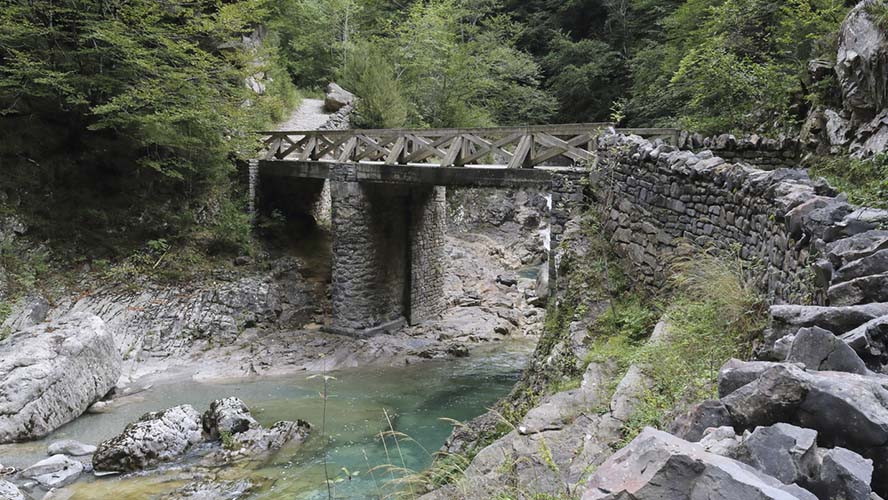
The Ordesa y Monte Perdido National Park, home to the Añisclo Canyon, was declared a UNESCO World Heritage Site in 1997. This natural landscape consists of four valleys of extraordinary beauty: Ordesa Valley, the Añisclo Canyon, Pineta Valley and the Escuaín Gorge. Each of them are home to multiple hiking routes, which are a great way to enjoy nature in its purest form. There will be no shortage of waterfalls, gorges and huge vertical walls that make for postcard-perfect views.
Ruta circular al Cañón de Añisclo
No hay una única ruta circular por el Cañón de Añisclo, sino varias. Para llegar al punto de partida desde la localidad de Escalona, hay que tomar el desvío que indica Cañón de Añisclo hasta llegar al aparcamiento de San Urbez. Desde allí, se pasa por el desfiladero de Cambras y tomamos un camino que desciente hasta el punte de San Urbez (a 30 metros sobre el río). A partir de este punto, se pueden hacer dos rutas circulares:
Puente del río Bellós – Río Aso
Se trata de una travesía circular corta, de unos 45 minutos. Discurre por diferentes miradores hasta llegar al río Aso. En este último punto, merece la pena observar las cascadas.
Sercué
Esta es una ruta circular más larga, de entre tres y cuatro horas de duración. El destino es el pueblo de Sercué, que está deshabitado porque quedó vacío tras el éxodo rural que se vivió hace años en aldeas de las montañas del Altoaragón. Una vez en el pueblo, no hay que dejar de ver su iglesia románica.
Qué se puede ver en los alrededores
Además de realizar rutas de senderismo por este enclave natural de gran belleza del Pirineo Aragonés, cerca del Cañón del Añisclo hay dos localidades históricas que merecen la pena realizar una visita.
Jaca
La localidad de Jaca fue la primera capital del Reino de Aragón. Hoy, se considera como la ciudad más importante del Pirineo Aragonés, o la más conocida por su valor histórico y ritmo de vida, y es la capital de la comarca de La Jacetania. Está muy vinculada a los deportes de invierno; de hecho, muchos esquiadores que van a las pistas de Astún o Candanchú escogen a Jaca como lugar donde hospedarse.
Del patrimonio histórico y cultural de Jaca, caben destacar diferentes monumentos y edificios. La Catedral de San Pedro de Jaca (siglo XI) constituye todo un referente del estilo románico español. Fue un templo relevante por su conexión al Reino de Aragón y el Camino de Santiago. Su interior alberga un Museo Diocesano donde se puede admirar una colección de pintura medieval de prestigio internacional.
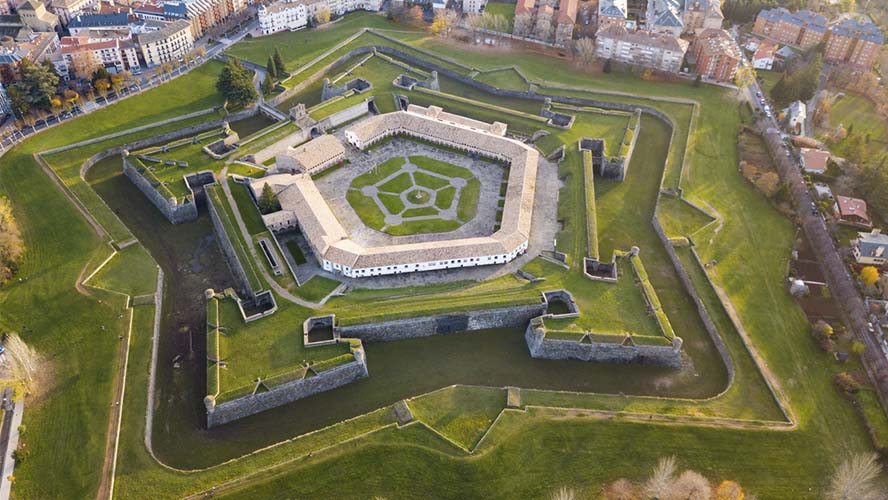
Compite en protagonismo la Ciudadela o Castillo de San Pedro, una fortaleza con forma pentagonal de estrella de cinco puntos que fue ordenada construir por Felipe II a finales del siglo XVI. Constituía uno de los puntos fuertes de la red defensiva del Pirineo Aragonés junto con la ciudadela de Pamploa o el fuerte de Santa Elena (Biescas), entre otros. De su exterior, llama la atención el foso en el que se pueden ver ciervos, su muro y torres de aspecto macizo. Del interior, destaca un gran patio central y el Museo de Miniaturas Militares, que alberga una colección de 32.000 figuritas de plomo.
No hay que dejar de pasear por el casco antiguo, un espacio histórico y lleno de vida en el que se ubican su ayuntamiento de estilo renacentista o templos como la iglesia de Santiago, la del Carmen o la de San Salvador y San Ginés -aquí está el sarcófago de la infanta Doña Sancha, auténtica joya de la escultura románica-.
Sabiñánigo
A 55 kilómetros de Huesca y a 18 de Jaca, se sitúa Sabiñánigo, localidad considerada como la puerta de entrada al Pirineo Aragonés e importante centro industrial y de servicios. Esta localidad oscense ha conseguido mantener su legado histórico y tradiciones a pesar de su desarrollo industrial.
Sabiñánigo pasó de ser una aldeta de poco más de 100 habitantes dedicados a la agricultura y ganadería, a convertirse en una localidad de servicios e industrial gracias a la llegada del ferrocarril y la creación de servicios para acoger a los turistas que se acercaban al Balneario de Panticosa. En cuanto a industria, el aluminio y la industria química florecieron y dieron trabajo a mucha gente.
A nivel turístico, merece la pena visitar alguno de sus museos, como el Museo Ángel Orensanz y Artes de Serrablo, que recoge la cultura material y espiritual de una gran área del Pirineo aragonés, o el Museo de dibujo Julio Gavín-Castillo de Larrés, que muestra miles de dibujos de artistas contemporáneos como Dalí, Zuloaga o Antonio Saura, entre otros.
How to get there
To reach the Añisclo Canyon, take the road that leads to Bielsa and turn off at the crossroads that heads to Escalona and the Ordesa National Park. Continue along the Añisclo Valley road for 13 kilometres until you reach the Añisclo Canyon car park, which is free of charge. Leave your car here and begin your hike through this beautiful natural landscape. If you’re coming during high season we recommend arriving early to make sure you get a spot in the car park, which tends to fill up quickly.
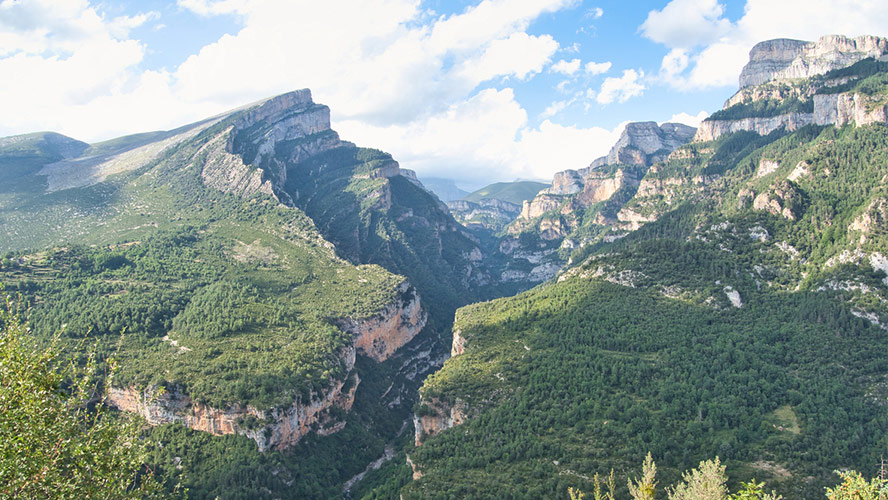
If you’re coming from Aínsa, you’ll need to drive roughly 10 kilometres to Escalona and then a few more until you reach the Añisclo Canyon car park.
Dónde comer cerca del cañón
Además de optar por comer en alguno de los restaurantes de localidades como Jaca, Sabiñánigo, hay varios restaurantes de calidad cerca del Cañón de Añisclo.
Uno de ellos es el restaurante Casa Fracua (Avenida de Ordesa, Sarvisé), muy conocido en toda la zona del Parque Nacional de Ordesa y Monte Perdido por los senderistas que, tras un día de ruta, paran aquí a comer y reponer fuerzas.
Otro es el Balcón del Pirineo (Calle Vita 47, Buesa). Situado en Buesa, una aldea pirenaica, ofrece a los comensales unas bellas vistas al valle del Broto. De su carta de platos, destacan las carnes de ternera pirenaica a la brasa.
USEFUL INFORMATION
Due to its rugged orography and difficult terrain, we recommend visiting the Añisclo Canyon when it is good weather. Spring and summer are therefore the best times of year to visit. We don’t recommend coming in cold seasons, as heavy rainfall can sometimes cause flash floods and sudden rises in the Bellós river.






































































